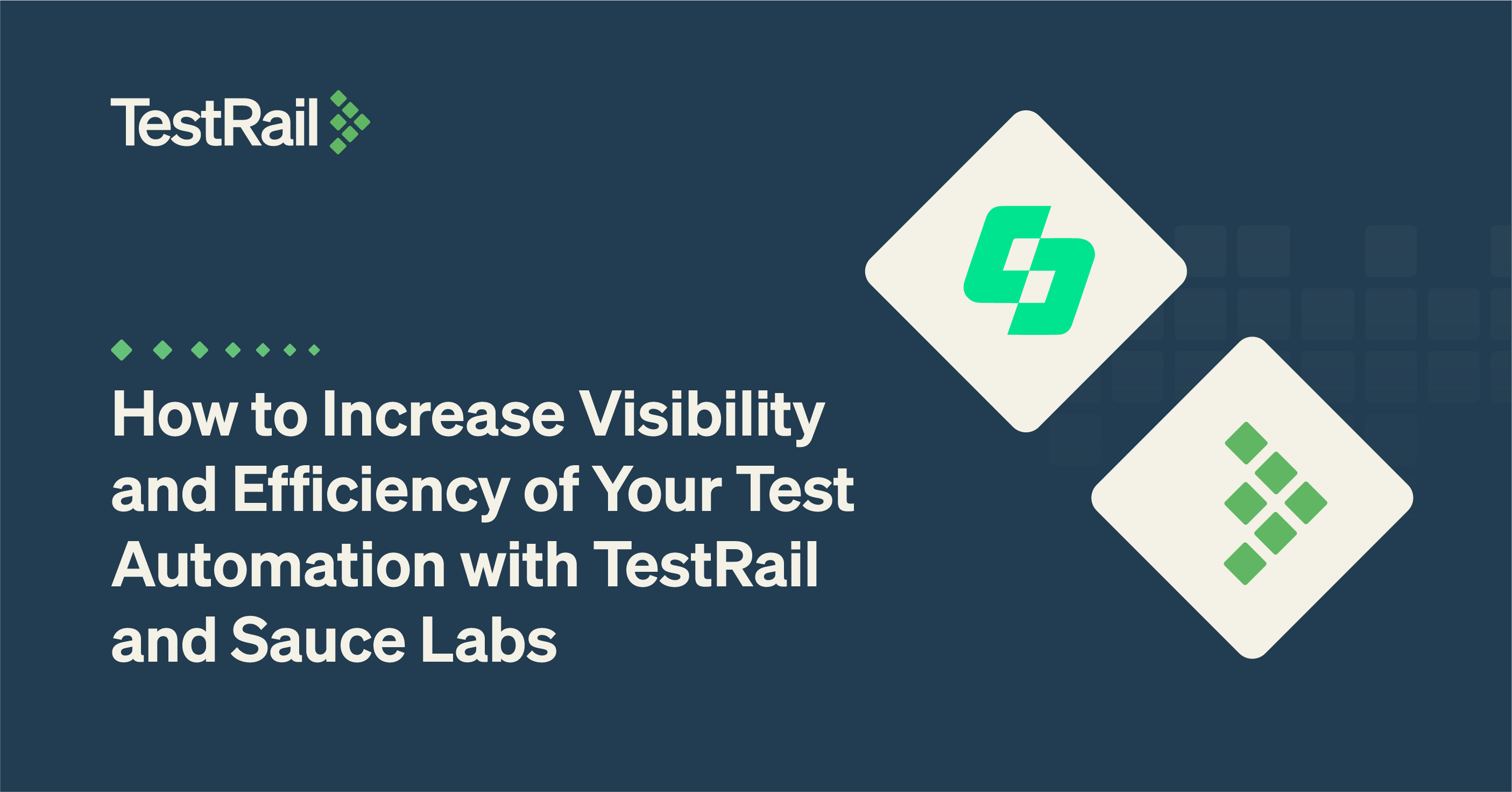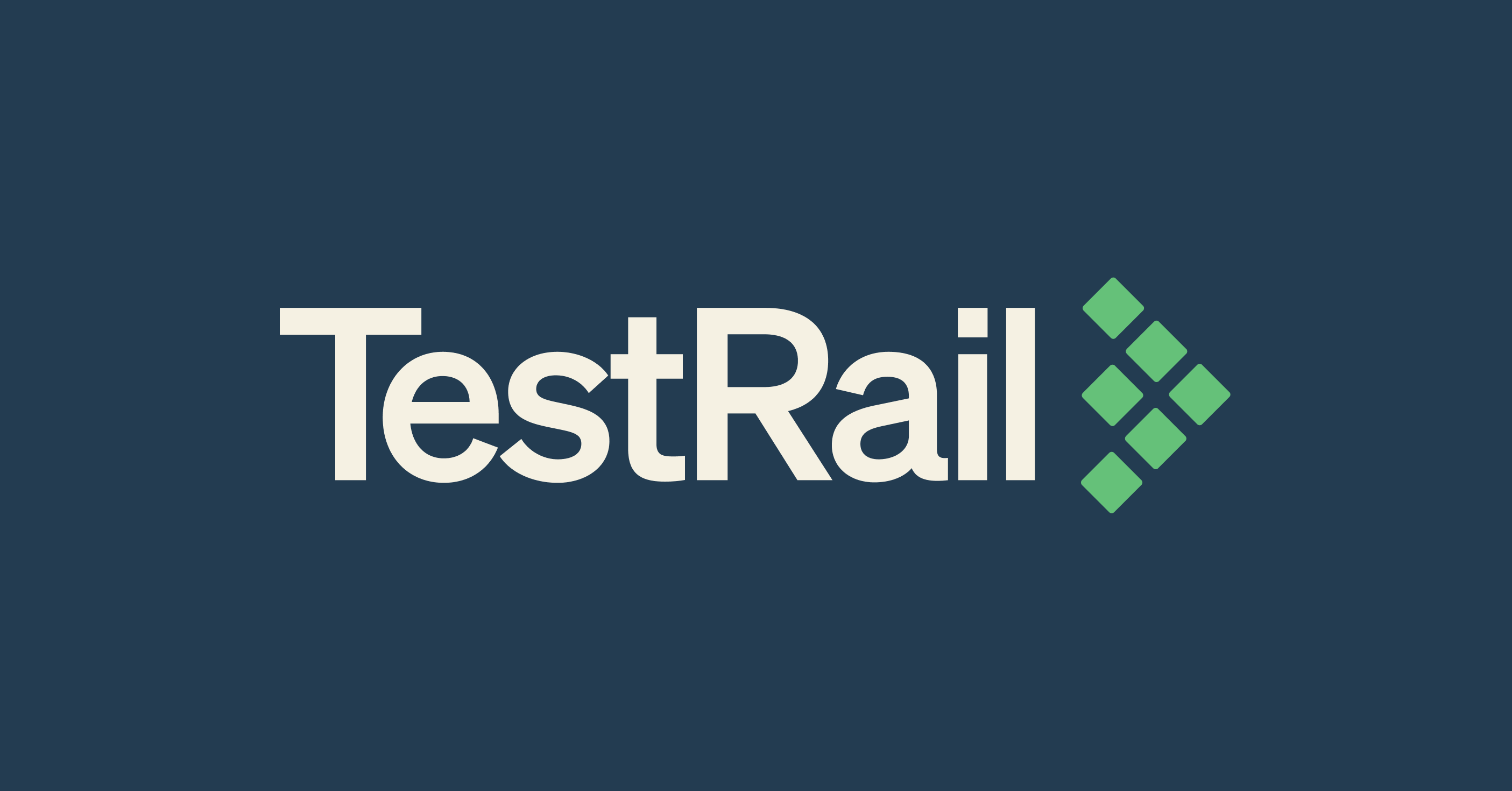Most software development teams use some form of automation in their testing processes to improve the efficiency, speed, and accuracy of repetitive regression tests. Using automation allows you to perform a larger number of tests in a shorter time frame and broaden your test coverage while allowing the members of your QA team to focus their time on more valuable exploratory or risk-based testing efforts to improve the user experience and overall quality of your application.
The challenge
Despite the benefits of automation, the software testing industry faces several challenges in keeping up with the speed of development. As more and more teams incorporate DevOps practices into their software development pipeline, the pace of releases continues to accelerate, leaving less and less time to test.
Manual regression testing can slow down progress, particularly with the increasing complexity of applications. However, developing automated tests often takes a large up-front investment of time. Automated tests often need to be tested and validated to ensure they effectively verify what they were designed to test.
Another challenge is aligning the technical and human resources you need to develop, run, and maintain your tests. It is inefficient for your in-house QA operations team to procure and manage multiple types of devices running various operating systems with different versions of web browsers and other applications.
Once you start running your automated tests, you will usually find it difficult to maintain visibility into the progress and results of those tests. Often, the only person with access to all of the data about your automated tests is the test automation engineer or SDET who set up the tests. This can lead to delays in communication, confusion about the status of tests, and the possibility of missing major areas of risk in your application.
Finally, when it comes to testing tools and frameworks, it’s common for teams to adopt new solutions without considering their integration with existing testing processes. This can lead to data silos, ineffective communication between team members, and a lack of meaningful traceability between development and QA.
The solution
To speed up testing without sacrificing quality or efficiency, you need to track your test automation efforts in the same place as the rest of your testing. One way to accomplish this is to integrate a continuous test automation platform like Sauce Labs with a centralized test management platform like TestRail.
TestRail’s Quality OS centralizes manual and automated test management and gives you visibility into your entire quality operation. With TestRail, you can consolidate and report on all your testing activities, no matter which tools or frameworks you use or how you execute your testing.
Sauce Labs allows you to run various types of test automation frameworks — like Selenium, Appium, Cypress, Playwright, and more — on multiple kinds of devices. They provide continuous testing and error reporting solutions that streamline the creation, delivery, and enhancement of high-quality code.
By integrating Sauce Labs with TestRail, you can leverage the power of automated testing to run tests more quickly and accurately while maintaining 360º visibility and traceability across your entire testing operation.
About the integration
The TestRail-Sauce Labs integration provides a powerful toolset for streamlining your testing process, enabling faster and more efficient test automation, and improving your overall QA and testing process visibility.
The easiest way to integrate Sauce Labs with TestRail is to use Sauce Lab’s saucectl CLI tool and then TestRail’s trcli. Saucectl will run automated tests across multiple browsers, operating systems, and devices in your Sauce Labs account, and then the trcli will automatically upload your test automation results to TestRail.
Saucectl is a tool offered by Sauce Labs that acts as a command line interface to orchestrate the relationship between your tests in your framework and the rich parallelization, test history filtering, and analytics of Sauce Labs. It also enhances JUnit reports with information related to your testing sessions.
TestRail CLI is a command line interface tool that helps you import results from automated tests and even create test cases automatically. The TestRail CLI tool reads JUnit reports and sends the relevant data to TestRail so you can have all your test results in one place.
Benefits of using Sauce Labs with TestRail
Once the test results from Sauce Labs are within TestRail, the data is consolidated into a unified platform for testing, providing several benefits for QA and development teams:
- Single Source of Truth: use TestRail as a centralized location for managing all your tests, runs, and results. By reporting on test automation results alongside manual test results in TestRail, you get a unified repository and history for all of your testing efforts.
- Enhanced Visibility and Reporting: visualize all of your test data in real-time to discover areas of risk. By integrating Sauce Labs with TestRail, your entire QA team can access the most up-to-date testing information no matter who (or what) ran the tests and use TestRail’s built-in reports to isolate problems and optimize your quality processes.
- End-to-End Traceability: TestRail allows you to report on traceability between development requirements, automated tests run in Sauce Labs, and defects using TestRail’s references and defect fields. This enables you to leverage the power of continuous testing in Sauce Labs while maintaining compliance for audits and security requirements.
- Improved Collaboration: build transparency and visibility into QA by tracking all your test activities and quality metrics in a single source of truth to improve team collaboration. Regardless of whether they are manual or automated tests, all test results are easily accessible in TestRail, allowing teams to identify and address issues quickly.
- Streamlined Testing: by using Sauce Labs to run your automated tests and integrating Sauce Labs with TestRail, you can speed up the process of building, maintaining, and reporting on automated tests. Save time and effort by focusing on what matters: improving software quality.
- Test Orchestration: take full advantage of your Sauce Labs integration with TestRail by using Sauce Orchestrate for both web and mobile test orchestration. Bring any test suite—any framework, any language—and accelerate test runs by up to 70%. Save additional time and costs by offloading compute workloads (such as mock APIs and ephemeral microservices) from your CI/CD platform of choice. Sauce Labs offers the original, purpose-built test infrastructure with greater cost-efficiency, scalability and intelligent capabilities to accelerate deployment and get your product to market faster.
How the integration works
Integrating Sauce Labs and TestRail is simple. First, install saucectl and configure it to start running automated tests in Sauce Labs by following the instructions on the Sauce Labs saucectl documentation. Then, install the TestRail CLI and connect it to your TestRail instance. When you complete these steps, the only thing left to do is to push the automated test results to TestRail using the JUnit report generated by Sauce Labs.
Once you have mapped your test results to your test cases in TestRail, you can view all your test results in one platform. The test results will include test status, test artifacts, and browser and platform information. Use the hyperlink provided in the test result to jump back to Sauce Labs and find more information about the test execution itself.

The integration between TestRail and Sauce Labs provides:
- Execution of your automated tests in Sauce Labs using the framework of your choice
- Organization and visualization of all your manual and automated testing activities in TestRail
- Hyperlink on the TestRail result to easily navigate back to Sauce Labs
- Custom reports built from a single source to track the coverage of your tests, references, defects, and much more
Conclusion
Integrating TestRail and Sauce Labs offers several advantages for software development teams, including faster development, increased efficiency, and improved test visibility. By using command line interfaces to send automated test results from JUnit reports generated by Sauce Labs to TestRail, teams can easily manage tests, track progress, and store results in a single source of truth without losing track of execution details.
Additionally, the integration helps teams ensure the quality of their user experience by ensuring web and mobile applications function and perform as intended on every browser, OS, and device. The integration is straightforward, and with the help of tools such as the saucectl and the TestRail CLI, teams can enhance their testing process and reduce the risk of bugs going unnoticed.
Want to see how the TestRail-Sauce Labs integration works?
On June 20th at 12:00 PM EDT (6:00 PM CEST), together with Sauce Labs, we will host a webinar called “Orchestrating Testing Efforts for Enterprise Success”.
Uncover the challenges of implementing test automation in today’s evolving software development landscape. Join us and learn how integrating comprehensive test management with a centralized platform can boost testing efficiency, speed, and accuracy.
Key takeaways:
- Learn how to overcome challenges in test automation and keep up with the speed of development.
- Gain insights into streamlining your testing efforts and saving time and effort.
- Understand the importance of end-to-end traceability and improved collaboration for your QA team.
- Discover how TestRail and Sauce Labs can enhance visibility and reporting in your testing processes.
About TestRail
TestRail is the only centralized QA platform that gives you the power to build, connect, and optimize all of your testing processes. Over 10,000 QA teams use TestRail to release flawless products faster by testing more efficiently, getting real-time visibility at scale, and building confidence in QA.
About Sauce Labs
Sauce Labs is a leader in providing cutting-edge continuous testing and error reporting solutions that streamline the creation, delivery, and enhancement of high-quality code. With over five billion tests performed on its cloud test infrastructure that includes a unified data intelligence layer, Sauce Labs provides a complete solution to optimize testing speed, efficiency, and scalability.



